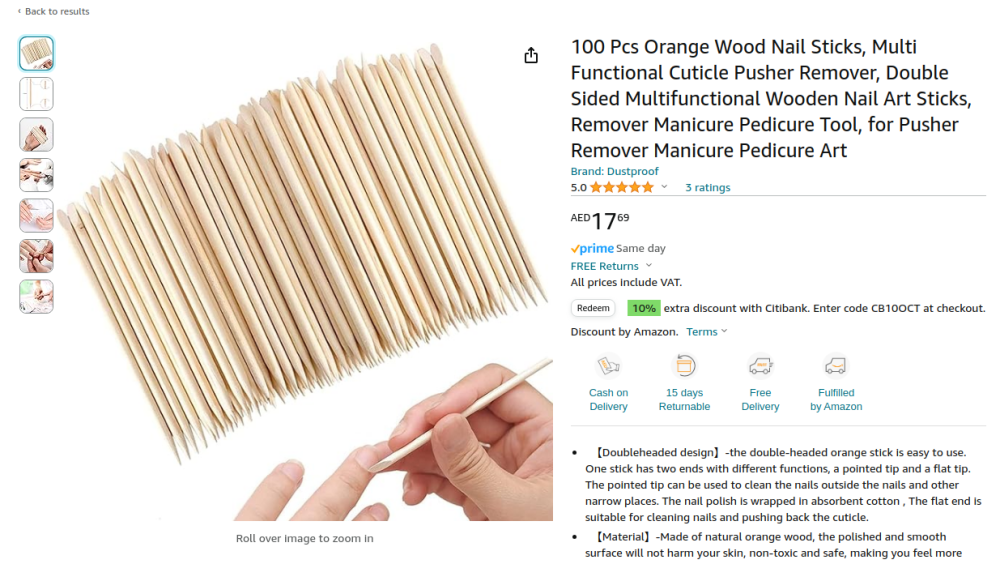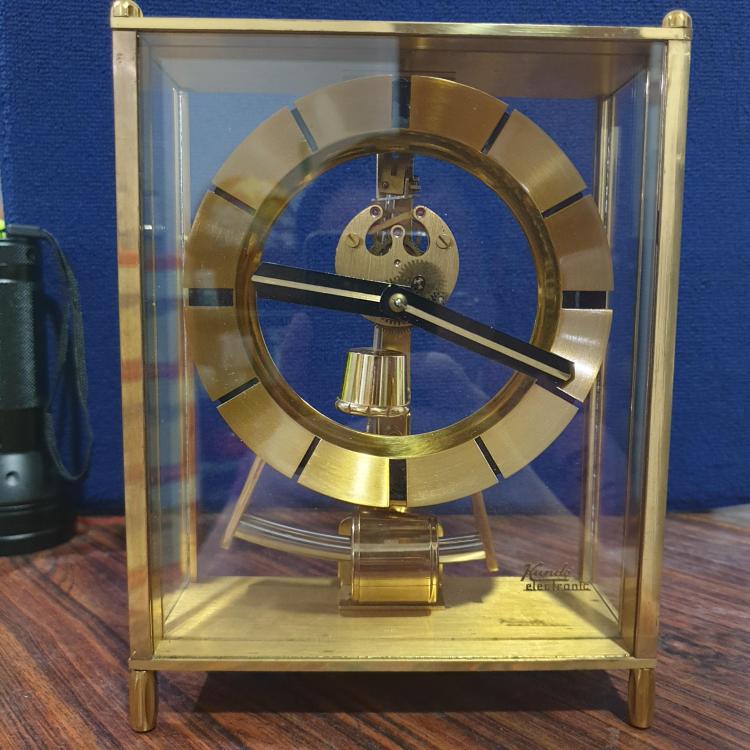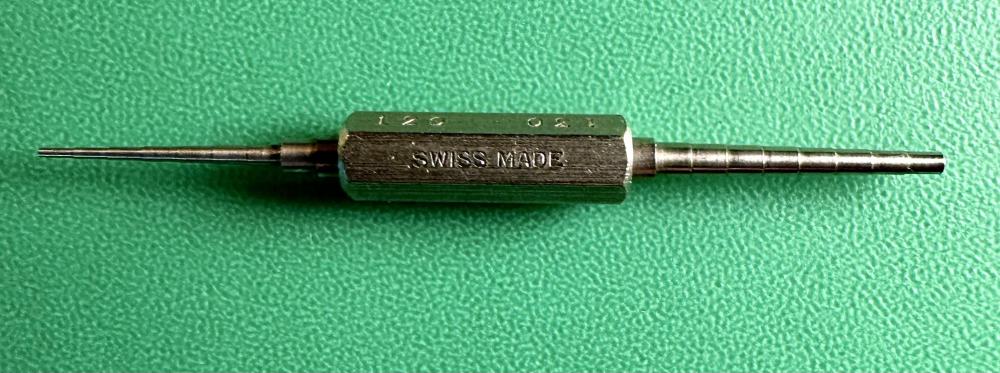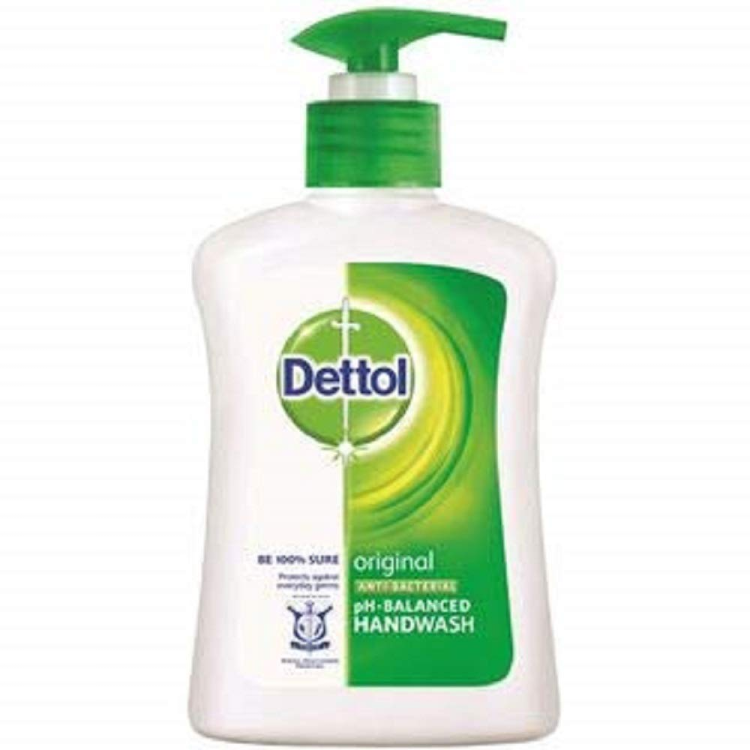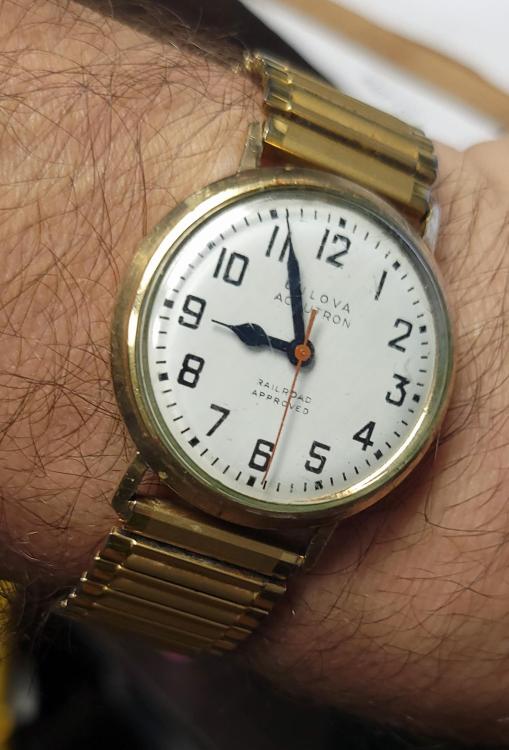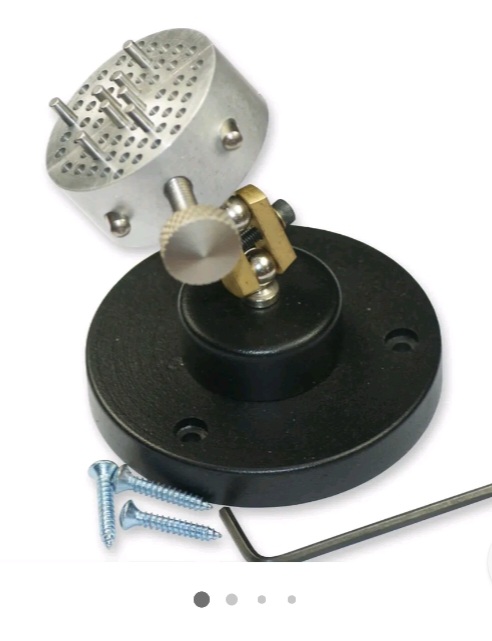Leaderboard
Popular Content
Showing content with the highest reputation on 10/11/23 in Posts
-
3 points
-
You won't find a cal number on those types of clocks with a cylinder escapement. Your best bet is to find a replacement complete platform, you will need the wheel count and the length of the escape wheel, the width and length of the platform. As already been pointed out it is in a terrible condition, having an alarm is a bonus, have you got the dial and what condition is that in? Also the bell which fits under the base. I only see the alarm hand what about the minute and hour hands. How is the case is it complete with the glass panels if not they are very expensive to replace. One last thing the replacement platform look on ebay there are normally quite few about. Make sure that the cylinder and hairspring are in good condition a worn cylinder and the clock will not work well if at all.3 points
-
This is a great question and one that I often struggle with, the engineer in me wants to fall back to the engrained "if it ain't broke don't fix it" mentality, but then how many watches have I opened that looked in great condition, only to discover a 'can of worms' once I started taking them apart. So now my default thinking is that there is no down side in servicing a watch (unless it is beyond your skill set or you accidentally break something) but there could be a downside in letting a watch go un-serviced which has an undiscovered issue. In addition to this, this whole hobby (for me at least) is about taking watches apart and putting them back together and learning from the experience, so now my default position is to always service.3 points
-
3 points
-
Here's a post by @nickelsilver that I think will add to the discussion:2 points
-
The price, like beauty, is in the eye of the beholder. The price is a little high. I paid about $55 (not including shipping). But what is there not to like about an electromechanical clock? I just took a look at the prices on eBay. There are a lot of them at crazy prices. Oh, I just remembered mine came with a broken suspension spring. So if you add another $30 for the spring, $75 sounds like a great deal.2 points
-
Good for you. But that looks a perfectly good spring to me. I've had new springs that didn't looks so good. Can you send me all your "old" mainsprings please1 point
-
I tend to use Bergeon brass tweezers No.2 and No.3 for everyday work, as they don't tend to scratch. For serious stuff like replacing a cannon pinion, holding back springs, etc, I use Dumont No.2 carbon steel tweezers, as they are hard as nails and won't give like finer or stainless steel tweezers. (I find vintage carbon steel tweezers so much better than the new ones. I think the composition of the tweezers may have changed over time, making them not as hard and durable... (Just my experience of older carbon steel compared to the new ones). To be honest, I stay well away from stainless steel tweezers because they are as soft as chewing gum, so it's best to go with carbon steel in whatever size/number you need. I bought some titanium Cousins cheapo tweezers No. 6, but they need some serious honing to work with hairsprings, they are a good inexpensive option if you don't use Dumont No.5's for this kind of work. Angled hairspring tweezers, such as No.7's or No.6's are good if working under a microscope, as you can see the hairspring properly under the scope, but if you are doing hairspring manipulation without a microscope I find it nigh on impossible, especially if it takes an hour or more to do the work. There is no way I'm using an X15 or X20 at an 11 mm working distance with a loupe for that amount of time, so a microscope is the only way to go for ease and comfort. Anyone who does use a loupe for hairspring work is doing themselves a massive disservice. I'm speaking from experience of using a loupe in the early days compared to using an x40 microscope now. I only speak from experience. I first bought No.1 and No.3 stainless steel tweezers in the early days and may pick them up every now and then, but they are not my go-to, as they are too soft and too fine for me. As I've said, this is my experience. I'm not telling anyone what they should use. Try out many sizes and makes until you find what fits for you, as I did. But quality is remembered long after price is forgotten and Dumont and Bergeon tend to be the winners, although the cheap titanium Cousins tweezers have potential once they are honed properly.1 point
-
Hi. I am a great believer in not spending money on things I can make , modify, re purpose. For example, Watch covers, fragrance candle jars , Felting needles , oilier Sewing machine needles mounted make good probes and with a little heat can be bent, build your own clock spring winder, build your own dial foot tool, I could go on but that’s enough.1 point
-
One of the problems in horology is the assumption of a caliber number will allow you to find spare parts. The problem is spare parts only existed if the manufacture had spare parts. Often times the manufacture was not thinking about after sales service. In the case of a clock with a platform escapement the platform escapement was purchased typically not made by the clock manufacturer. So if the platform escapement maker was thinking about 100 years from now you might need spare parts they would've bundled up spare parts but more than likely they never did. They would prefer to sell you the entire platform.1 point
-
So I've finally identified this thingie- there's a lovely post what shows this jewel gauge...and everything you wanted to know about watch screws.... ...helpful for me as I have cased a watch I have posted here previously and the movement ring is unfortunately a bit wonky, so I'm down the rabbit hole of sizing and locating case clamps, screws et al...1 point
-
One of the minor problems of lack of availability at time would be conceivably might end up with not finishing the job and not having your watch for a while. So easy to get started on something other than a distraction comes along and it's really best if you can wait until you have time to do a proper servicing This an amusing concept where I work. When they change a battery of quartz watch if it has a metal band they offer to clean it had a fee of course. The basically say the normal fee is this but because you're getting a battery will discount it to this. We make more money this way. On the other hand it appears to be that some metal bands have wormholes to another universe filled with a lot of dirt and those metal bands can hold a heck of a lot of not very nice stuff. Then the other thing that happens they often will point this out to the customer the bands are on the verge of disintegrating because of all this Grimes it's in there does speed up the wear of a metal band. Then typically we do clean it it makes the watch look like new. Typically what they do is they do remove the bands and it goes into an ultrasonic machine.1 point
-
1 point
-
I've owned at least a dozen maybe 20 over the years, upgrading until I had a nice "full set", then two full sets (I like having back up tools). So currently two full sets, and two little sets, those I keep in case I need or want to modify one for something special. The rest have been sold on or given away to younger watchmakers. I would certainly have been ahead money-wise had I waited and gotten a good full set in the beginning...1 point
-
One thing I forgot to mention was the amount of DNA that came free with the watch - if it turns up with a lot of arm cheese then a good clean of the case and bracelet is a must before I could touch it without a hazmat suit, and if you need to take it apart to do that (ie you don't trust the seals) then you are most of the way to a service anyway. Actually, after seeing the condition of the cleaning solution after an apparently clean bracelet and case is cleaned I cannot now bring myself to wear any watch that hasn't been sanitized and like I said if you have invested that much time and effort you may as well go the whole hog and service.1 point
-
Another thing would be how often do you use the watch. For instance from one of my uncles he was unhappy with his Rolex it wasn't working so I traded something and acquired a Rolex. Fixed all the problems restored it back to new condition. Only ward occasionally and I believe 25 years later I serviced it again. Didn't see any issues at all. But it only came out of hiding occasionally usually on holidays when I wanted to impress people with luck I have a Rolex watch. Then I purchased a really nice Hamilton 992B pocket watch that looked nice on the timing machine looked nice inside and zero idea When it was last serviced so I just ran it until It had an issue. I suspect the Canon pinion is loose as to why the hands are not tracking but I just haven't got around to servicing its. We'll find out if running a watch without servicing was an issue of eventually if I have time. It also depends upon type of watch like of the automatic watch with a lot of metal on metal parts that I would get serviced more often. If it's something that's supposed to be at water resistance like the automatic watch I would be concerned about the gaskets after several years because moisture getting into wristwatch would be extremely bad. With that kind of damage not necessarily showing up on a timing machine until the watch is disintegrated. So basically there's a lot of variables here plus if you have a lot of watches then you basically run out of time for servicing all of them especially if you do not run them on a regular basis.1 point
-
Currently mine is sitting on the shelf with a bunch of other interesting things. Then yes it looks identical to mine and unfortunately do not remember what I paid for mine.1 point
-
Give it time and the perfect option will eventually surface. Yes, I know, it really sucks having to wait but waiting for the right tool to show up is very much a part of this interest unless you have unlimited resources. In case you do have unlimited resources, and I hope you and everyone else have, you can always place an order here Or, in the meantime, get a Jacot in good condition for little money (even without the centre wheel runner) and then resell it once a better option surfaces. That's exactly what I did.1 point
-
1 point
-
Reverse of this, I used the way too big oiler that came in a set to straighten the grooves in scratched/skipping vinyl records. I filed it down to a profile with something like a knife edge on one side, and a hook on the other. That way, once I find the skipping section, I can push or pull the ridges between the grooves straight so that the needle can pass cleanly through. The end result will still have a bit of a scratch to it as it passes the damaged section, but it'll play again just fine!1 point
-
I once asked my mentor when do we straighten and when do we repivot? His answer was to try straightening first and if it breaks, then repivot.1 point
-
I can’t recall where I saw or the precise turn of phrase, something about the watchmaker must decide if they are the type to break their pivots efficiently and economically with tweezers or if they prefer the expense and precision of breaking them slowly with the Seitz tool…1 point
-
Lolly sticks with self adhesived emery cloth or chamois for buffing, sanding and sharpening. Can also charge them with cutting paste and compound to make flat plate laps for polishing parts. Acupuncture and sewing needles for fine oilers, collet removers, hairspring tweekers, disassembling tools etc. flatten the tip with a flat stake and then shape and sharpen for its use. Cut up pieces of yoga or click together sponge floor mat to make polish pads or fit into varoius jar lids to make watch cushions. Foam insulation used for underfloor heating or kingspan, celotex wall insulation as an alternative to pithwood. A piece of bluetack on your desk to jab your screwdrivers into to remove fibres, hairs etc. Dessert glass ramekins for keeping dust off project movements. Ebay jewellers vice converted to movement and part holders ( actually beats any movement holder i have, and i have a few ), it can fit steel, brass or wooden pins for grips. Dried flower glass holders for holding tweezers, screwdrivers, pliers, brushes pinvices etc. Contact lens cases lined with rodico for safe keeping of project shock jewels and all springs ( put them in there as soon as removed before you cough, burp, sneeze or fart ). .5 copper wire stripped from electrical cable to make dial feet, hangers for watch parts. Hanging tea infusers and strainers to hold parts for cleaning. Cheap as chips mini dc motors to spin parts while electro plating, can be slowed down to 0.5 rpm. Wow all this and I'm not even out of bed yet1 point
-
1 point





